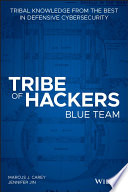

The Blue Team serves as the defensive force in cybersecurity, tasked with protecting an organization's information systems from attacks. This idea emphasizes the necessity of having a dedicated team that not only responds to incidents but also anticipates potential threats. A well-organized Blue Team can proactively identify vulnerabilities through continuous monitoring, regular assessments, and threat intelligence. By fostering a culture of security awareness within the organization, the Blue Team can mitigate risks before they escalate. This idea also highlights the importance of collaboration between the Blue Team and other departments, such as IT and compliance, to create a holistic security posture. The book illustrates various strategies for building an effective Blue Team, including the need for diverse skill sets, ongoing training, and the utilization of advanced tools and technologies.
Continue readingThreat modeling is a systematic approach to identifying and prioritizing potential threats to an organization’s assets. This concept is crucial for Blue Teams as it allows them to understand the landscape of threats they face. The book discusses various frameworks for threat modeling, such as STRIDE and PASTA, and provides practical guidance on how to implement these frameworks in real-world scenarios. By engaging in threat modeling exercises, Blue Teams can better allocate resources, focus on high-risk areas, and develop effective countermeasures. The importance of involving various stakeholders in the threat modeling process is also stressed, as it ensures a comprehensive view of the organization's threat landscape and fosters collaboration across teams.
Continue readingAn effective incident response plan is essential for minimizing the impact of security breaches. The book emphasizes the need for Blue Teams to develop, test, and refine their incident response plans regularly. It outlines the key components of an incident response plan, including preparation, detection, analysis, containment, eradication, recovery, and post-incident review. By having a well-defined plan in place, organizations can respond swiftly and effectively to incidents, reducing downtime and potential damage. The book also discusses the importance of conducting tabletop exercises and simulations to ensure that all team members are familiar with their roles during an incident, which can significantly enhance the team's overall readiness.
Continue readingEffective collaboration and communication are vital for a successful Blue Team. The book discusses how Blue Teams must work closely with other teams, such as Red Teams (offensive security) and DevOps, to create a cohesive security strategy. This collaboration helps in sharing insights and lessons learned, ultimately leading to a stronger security posture. The importance of clear communication channels is also highlighted, as it facilitates timely information sharing and enhances overall situational awareness. The book provides practical tips on fostering a collaborative culture within security teams and emphasizes the role of leadership in promoting open lines of communication.
Continue readingThe cybersecurity landscape is constantly evolving, and Blue Teams must adapt to new threats and technologies. The book underscores the importance of continuous learning for team members, encouraging them to pursue certifications, attend conferences, and engage in knowledge-sharing activities. By fostering a culture of learning, organizations can ensure that their Blue Teams remain ahead of emerging threats. The book also discusses the significance of adapting tools and strategies based on lessons learned from past incidents and ongoing threat intelligence. This proactive approach to learning and adaptation is crucial for maintaining an effective defense.
Continue readingMeasuring the effectiveness of a Blue Team is essential for demonstrating its value to the organization. The book discusses various metrics that can be used to evaluate the performance of a Blue Team, such as incident response times, the number of vulnerabilities identified, and the success rate of security training programs. By establishing clear metrics and reporting mechanisms, organizations can gain insights into their security posture and identify areas for improvement. The book also emphasizes the importance of communicating these metrics to stakeholders, ensuring that the contributions of the Blue Team are recognized and understood.
Continue readingThe final key idea revolves around the importance of building a security culture within the organization. The book argues that security is not just the responsibility of the Blue Team but should be ingrained in the organization's ethos. This involves training employees at all levels to recognize and respond to security threats, promoting best practices, and encouraging a mindset of vigilance. The book provides strategies for fostering a security culture, such as regular training sessions, awareness campaigns, and integrating security into the onboarding process for new employees. By creating a culture of security, organizations can significantly reduce their risk exposure and enhance their overall security posture.
Continue reading